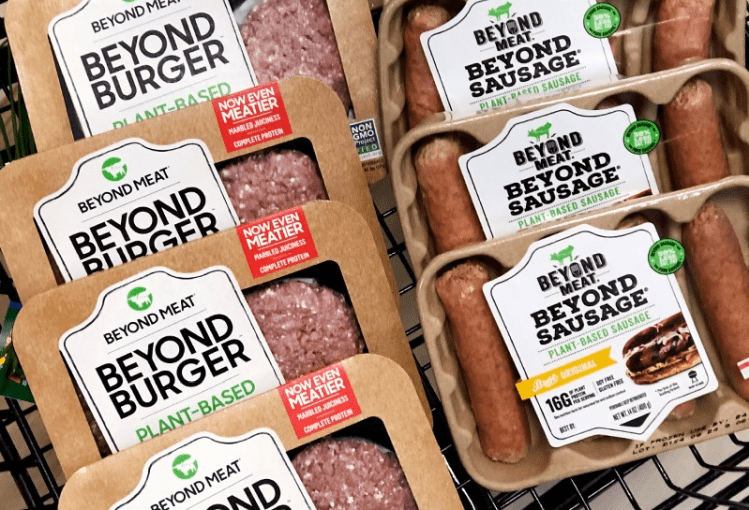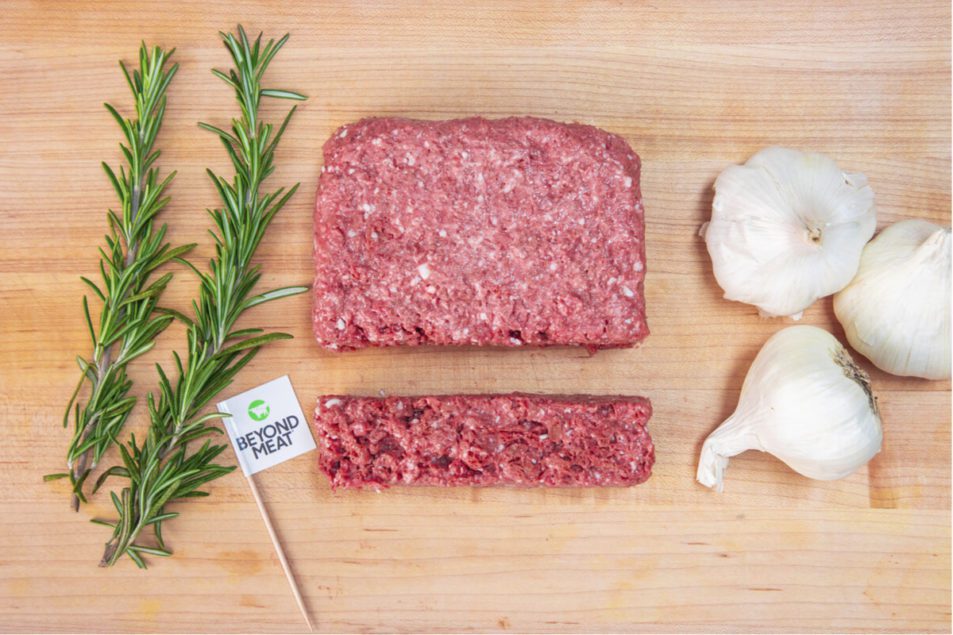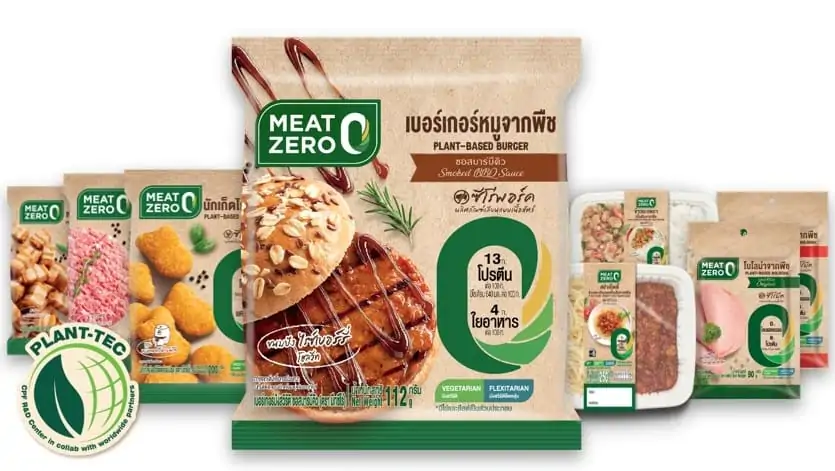We’ve already investigated the ingredients it takes to make Impossible Burgers. Now, we’re diving into another popular plant-based meat on the market: the Beyond Burger.
Whether it’s participating in meatless Mondays or shifting to a plant-based diet, reducing your meat intake is a great way to reduce your carbon footprint. According to the Food and Agriculture Organization (FAO), global livestock emissions have reached about 7 gigatons of carbon dioxide equivalent gas emissions per year—aka 14.5% of all human-produced emissions.
With an increased demand for plant-based meat—roughly 80 million Americans used plant-based meat alternatives in 2020—brands are delivering more options for plant-based eaters. You can find various plant-based meat alternatives at the grocery store or even at fast-food restaurants.
However, the question most people have is: What’s in a Beyond Burger, and is it eco-friendly? Let’s dive in.
Beyond Burger Ingredients

It may be hard to believe that this burger, made completely out of plants, looks and tastes like real meat. It even “bleeds.” So, what’s in the Beyond Burger that has even meat-lovers ordering this patty?
According to Beyond Meat, the plant-based beef gets its 20 grams of protein per serving from pea protein and rice protein. The burger-like texture comes from potato starch and methylcellulose. And to get the red meat-like color, Beyond Meat uses beet extract rather than the Impossible Burger’s soy leghemoglobin.
For the sizzle on the grill, fats like cocoa butter, coconut oil, and expeller-pressed canola oil are used. And finally, minerals such as calcium and iron are included to deliver the nutrients you may expect from meat.
Full List of Beyond Burger Ingredients
Water, pea protein, expeller-pressed canola oil, refined coconut oil, rice protein, natural flavors, dried yeast, cocoa butter, methylcellulose, and less than 1% of potato starch, salt, potassium chloride, beet juice color, apple extract, pomegranate concentrate, sunflower lecithin, vinegar, lemon juice concentrate, vitamins and minerals (zinc sulfate, niacinamide [vitamin B3], pyridoxine hydrochloride [vitamin B6], cyanocobalamin [vitamin B12], calcium pantothenate).
Now that we’re sure Beyond Burgers have moved beyond meat, we still want to know whether or not they’re good for the planet.
How Sustainable Are Beyond Burgers?

If you’re looking to try a Beyond Burger, you can find them at your local grocery store and at some fast-food restaurants. But before you do, let’s get a better understanding of how sustainable they really are.
To see the impact of the plant-based burger, Beyond Meat commissioned the Center for Sustainable Systems at the University of Michigan to conduct a life cycle assessment of the Beyond Burger.
The primary purpose of the “cradle-to-distribution” life cycle assessment was to compare the environmental impacts with those of typical beef production in the U.S.—specifically greenhouse gas emissions, energy use, water use, and land use.
The secondary purpose of the study is to identify ways to improve the environmental performance of the Beyond Burger product chain and provide a benchmark for Beyond Meat so improvement efforts could be measured.
Ingredients

Beef in any form comes with a massive environmental footprint. Just 1 kilogram of beef emits nearly 60 pounds (27.0 kilograms) of carbon dioxide equivalent gases, according to the Environmental Working Group (EWG).
However, according to the lifestyle assessment report, when compared to the environmental impact of a quarter-pound U.S. beef burger, producing the original Beyond Burger uses significantly less water, land, and energy, and it generates fewer emissions than a typical beef burger.
Specifically, the Beyond Burger uses 99% less water, 93% less land, 46% less energy, and 90% fewer greenhouse gasses than a quarter-pound beef burger.
Even still, the production of some of the main ingredients—specifically pea protein, canola oil, and coconut oil—are responsible for significant contributions to emissions, energy use, and land use. But those footprints aren’t as large as that of beef.
Pea proteins, or pea production, have a relatively low carbon footprint. About 1.2 kilograms of carbon dioxide are emitted to produce 1 kilogram (2.2 pounds) of peas. That’s equivalent to a car driving roughly 2.75 miles.
Canola oil also has a low environmental footprint—it takes about 1.7 kilograms of CO2e to produce 1 kilogram of canola oil. And it also takes 2.1 kilograms of CO2e to produce 1 kilogram of coconut oil.
Another pro: The Beyond Burger ingredients list doesn’t mention soy, which is known for using a significant amount of land for cultivation.
Packaging
According to its website, Beyond Meat’s packaging is recyclable. When purchasing directly from the website, the shipping box and insulation can be put in your curbside recycling.
However, Beyond Meat does mention that recycling guidelines may vary by location; therefore, you’ll need to check individual packaging and local recycling guidelines for more information. Ultimately, Beyond Meat leaves the recyclability component up to the consumer.
The life cycle assessment report also states that Beyond Burger’s polypropylene tray portion of the packaging contributed to the packaging’s share of emissions, energy use, and water use. The study estimates that switching to a polypropylene tray made of “100% postconsumer recycled content” could reduce the Beyond Burger’s emissions by 2% and reduce energy use by 10%.
However, there’s little information about the impact these trays have on the environment and whether the packaging is universally recyclable. We’d like to see more transparency in terms of what the packaging is made of.
The Takeaway

Overall, plant-based meat has a much lower environmental impact than animal-based meat, including Beyond Burgers. According to the EWG, experts at Oxford have estimated that beef consumption produces more than twice the carbon emissions of consuming lamb and nine times as much as consuming chicken.
And according to our research, swapping foods with a large carbon footprint (aka beef) for foods with a much smaller footprint (aka plant-based options) can reduce your environmental footprint by up to 48%.
With all the plant-based meat options available, it may be difficult to decide which one to add to your shopping cart. But no matter which plant-based burger you choose, small eco-friendly changes in your daily habits—like swapping out meat—make quite the difference for the planet!









